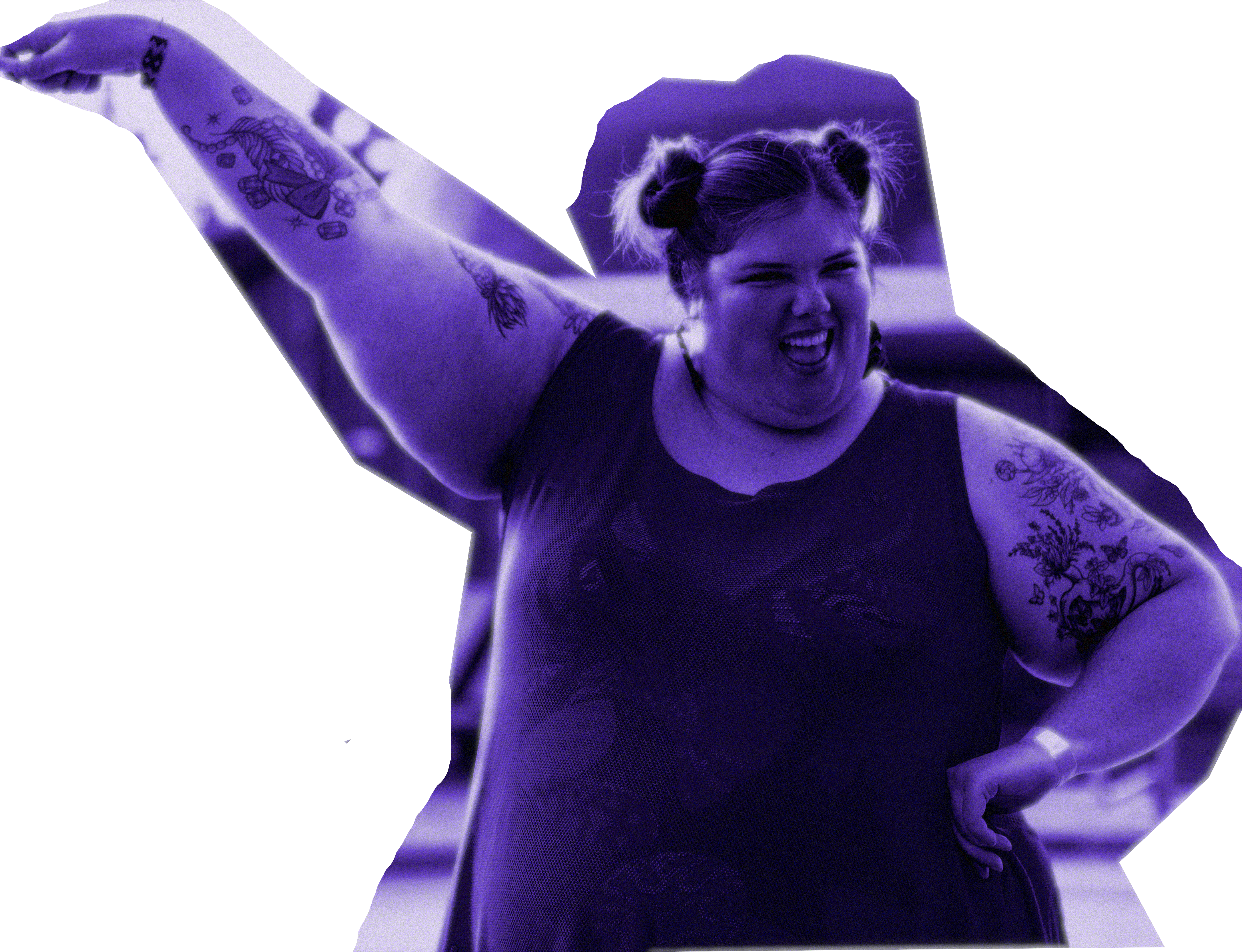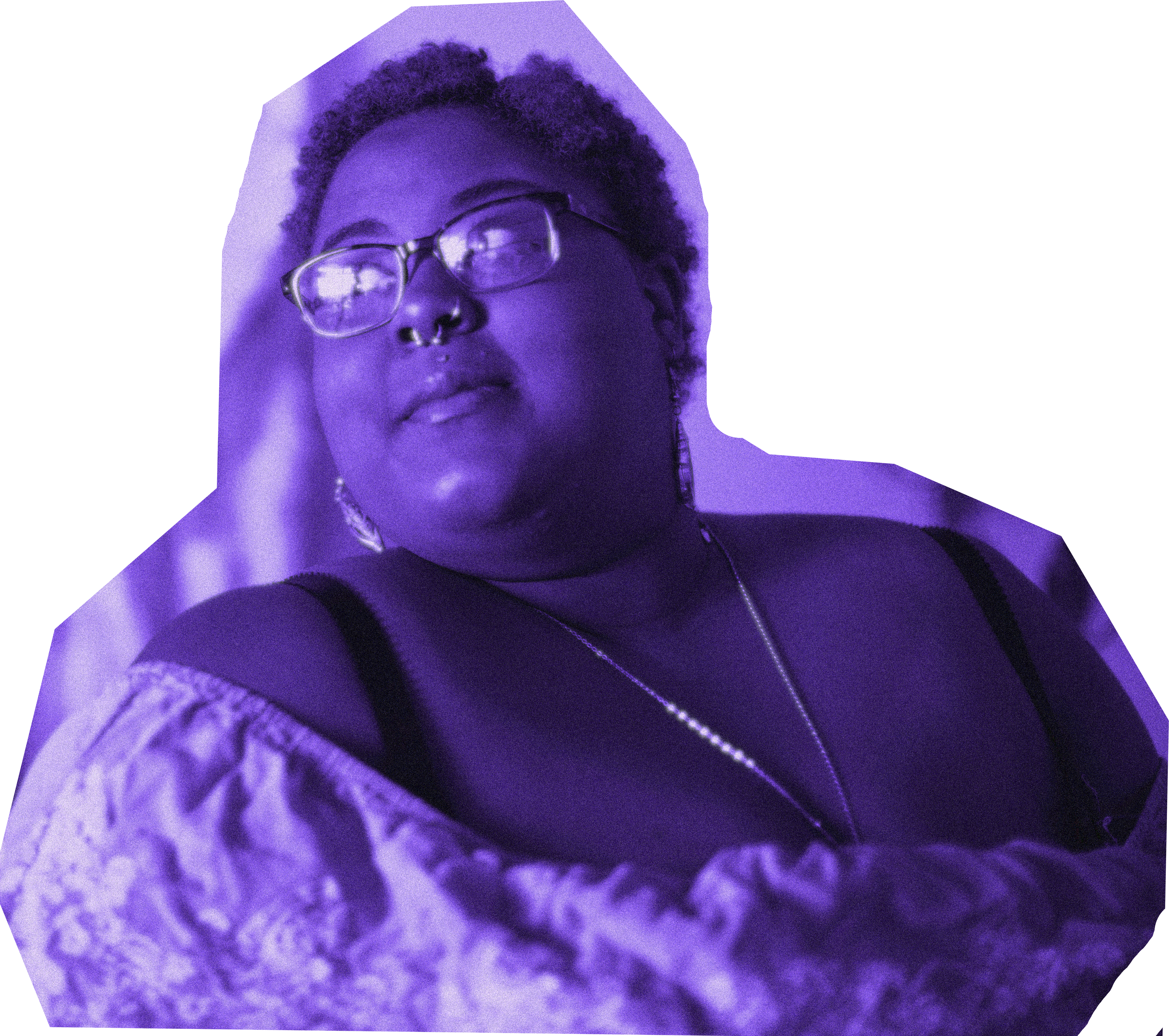
created by Jackie Maris and Talia Makowsky
Big thank you to Fat Torah for inspiring our Jewish and fat teaching.
Download this resource as a PDF!
Hanukkah is the festival of miracles and light. We tell the story of Jews of the second century BCE who, much like Jews throughout all of history, were facing hard questions about what it meant to be Jewish while living in a culture of forced assimilation. The miracle of Hanukkah was the Macabees finding oil in the desecrated temple to light the ner tamid (eternal light) for one night, but this oil, this fat, lasted a full eight nights.
In this way, fat is central to the miracle of Hanukkah. We honor the light that emanates from this fatty substance, as well as light candles each night. We use the oil to proclaim our Judaism through our windows each winter. We celebrate fat and Jewish identity as we bite into round, fried treats, like sufganiyot and latkes. These rituals harness our body’s senses: we see the light, we taste the food, we smell the oil frying, we feel the heat of the candles.

Our bodies, filled with blood and bile, fat and fluids, allow us to connect to tradition and ritual through our senses. But we are often at odds with our bodies trying to assimilate them into dominant, conventional norms and beauty standards. Especially as queer Jews, we find ourselves outside the bounds of the heteronormative, white supremacist “ideals” that shape our culture.
We are conditioned to hide ourselves, whether in a closet, or under many layers of clothing, or by tucking our Jewish star necklaces under our shirts. We restrict and confine and reshape ourselves, chasing a narrow “ideal” that is not our own. By freeing our senses and getting back in touch with our body, as we learn from somatic practitioners, we honor the parts of ourselves that we otherwise shrink, that otherwise do not get their full shine. By uplifting our queerness, our Jewishness, our fatness, we directly oppose the harms that we have learned to live with, as a part of our oppressive culture.
This year, we honor these varied parts of ourselves by celebrating the wholeness of our multiply connected, beautiful selves. Like oil and like fat, we too are miracles. We deserve to be witnessed as such.
As we light tonight’s Hanukkah candle(s):
We resist the narrow-mindedness of conformity and assimilation. We reject the blanket sameness and lack of difference that broader American culture works to impose. Instead, as we celebrate our Jewish identities, displaying our ritual in the windows of our homes, we recognize that diverse and multiple forms of Jewish practice are key to our communities’ flourishing. We welcome varied rituals and traditions that are meaningful to us and our families.
As we light tonight’s Hanukkah candle(s):
We resist anti-fat bias and diet culture. We reject thinness and deprivation, refusing to conform our bodies to unattainable and dangerous ideals. We invite abundance, nourishment, and fat. We celebrate the fatty taste of our sufganiot and latkes, which bring flavor and joy to our holiday.

As we light tonight’s Hanukkah candle(s):
We resist cisheteronormativity. We fight the forces dulling our queer and trans sparkle. We refuse to live in hiding. We welcome the glittering shine of our authentic selves, just as the candles of Hanukkah bring warmth and comfort.

Once the candles are lit, take a moment to reflect on the following kavanot/intentions:
What brings you in close connection with your Jewish identity? Is it rooted in family? Community? Ritual? Food? Spirituality? Nature? Music? Something else?
How can I invite abundance and nourishment into my relationship with my body?
How can I celebrate my whole, sparkling self? Which corners of myself need a little light, a little gentleness?
What other conformities are you resisting? What other ways are affirming your belief in yourself?
Shalem – wholeness – shares a Hebrew root with shalom – peace. What does this linguistic connection mean to you? How can I invite wholeness and peace into this holiday?